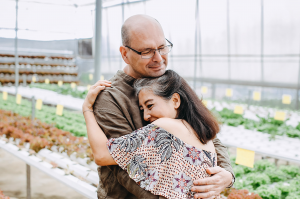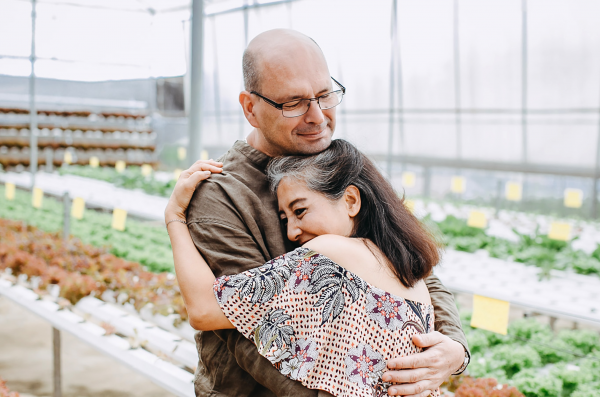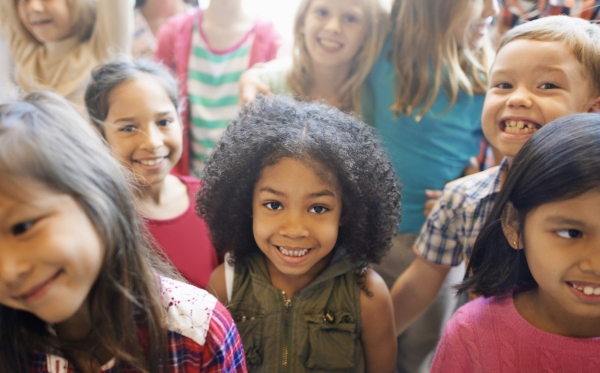Top 10 Insights from the Science of a Meaningful Life
Syndicated from Greater Good, Jun 21, 2018
15 minute read
In science, nothing can be taken for granted; even the most seemingly settled notion is a candidate for further testing and exploration. That’s part of what makes our work at Greater Good so exciting: We’re constantly uncovering research that looks at humanity in new ways, helping us all learn to be happier, more compassionate, and more resilient.
This year’s top insights are a tribute to that spirit. They debunk things we thought we knew, like how many human emotions there are. They inject some questions into the popular discussion of mindfulness, which can at times be overenthusiastic. And they open up new horizons for us to consider, like the possibility of finding purpose later in life and even changing our personality.
Besides tackling misconceptions, this year’s insights also shed light on the importance of social connections—an evergreen theme for Greater Good—and what connection actually looks like in today’s diverse and technological society.
To develop this list, we polled 350 researchers, asking them to name the peer-reviewed findings from the science of a meaningful life that were most provocative, powerful, and influential this year. We narrowed down the nominations from there, considering how the research is viewed today and how it fits into our coverage of the field over the past 15 years. Here are our top choices.
Emotional experience is much richer than we thought
 How many different human emotions are there? Psychology once assumed that most of our feelings fall within the categories of happiness, sadness, anger, surprise, fear, and disgust. But a new study published in Proceedings of the National Academy of Sciences suggests that there are at least 27 different but interlocking emotions.
How many different human emotions are there? Psychology once assumed that most of our feelings fall within the categories of happiness, sadness, anger, surprise, fear, and disgust. But a new study published in Proceedings of the National Academy of Sciences suggests that there are at least 27 different but interlocking emotions.
For the study, the researchers—including GGSC faculty director Dacher Keltner—asked more than 850 participants to watch over 2,000 video clips. The five-second clips included births and proposals, deaths and natural disasters, silly slips and risky stunts, spiders and wondrous nature, sexual acts and awkward handshakes.
In response to the clips, participants either wrote freely about the emotions they felt, rated how much they felt 34 different feelings, or rated their feelings along different dimensions used in emotion research (like positive vs. negative, or high-energy vs. low-energy).
Overall, participants showed very similar emotional responses to the videos. This allowed the researchers (using novel statistical methods) to identify 27 categories of emotion, such as anxiety, entrancement, and nostalgia. These categories weren’t sharply distinct but showed smooth gradients between them—from anxiety to fear to horror to disgust, for example, and from adoration to amusement to awkwardness (view a map here).
“Emotional experiences are so much richer and more nuanced than previously thought,” says lead author Alan Cowen.
It’s no exaggeration to say that these findings have the potential to change how psychologists think about human emotional experience—not as a small number of discrete feelings, but as a rich spectrum.
But why would humans have so many different emotions? This research dovetails with the emerging notion that a happy and meaningful life is not just about feeling good. In fact, experiencing a greater variety of emotions—even mixed emotions—may be key to our health and well-being. Rather than pressuring ourselves to feel positive all the time, we can embrace the vivid rainbow of emotionality that we’re all endowed with.
Young people aren’t the only ones who need a sense of purpose
 Parents and educators yearn to help young adults find a sense of direction and purpose in life. We know how important that can be for their future success and happiness.
Parents and educators yearn to help young adults find a sense of direction and purpose in life. We know how important that can be for their future success and happiness.
But a recent group of studies suggests that purpose may be just as important to older adults, helping prevent cognitive and physical declines that can accompany aging.
In one study, researchers tested people whose ages ranged from 32 to 84 on their memory and on cognitive skills, like focusing attention and keeping track of instructions, that help us plan ahead.
Results showed that, regardless of education levels or perceptions of their own health, adults at all ages—the elderly included—showed higher cognitive abilities if they had a greater sense of purpose. This means that purpose in life could protect us against cognitive decline as we age—a finding that complements prior research suggesting that purpose may reduce the risk of Alzheimer’s and its cognitive effects.
Research this year also tied having a purpose to better physical functioning. In one studyled by researchers at Northwestern University, having a sense of purpose led to better sleep patterns in older adults—a finding that could have far-ranging effects, given the connection between good sleep and health. Purpose has also been shown to lead to fewer hospitalizations and to less severe problems with mobility and hand-grip strength—two important markers of physical functioning in the elderly.
In combination with earlier findings that link purpose to better health and lower disease risk, these studies lend more credence to the claim that a sense of purpose is an important component of a healthy lifestyle for older adults. Fortunately, other research published this year suggests that older adults can foster a sense of purpose through deliberate activities, giving hope to all who want to nudge themselves toward a purpose-filled life.
We know less than we thought about the impact of mindfulness and meditation
 During the past two decades, more and more scientists have studied mindfulness—a Buddhist-inspired collection of practices aimed at helping us to cultivate moment-to-moment awareness of ourselves and our environment. Their early findings triggered enormous enthusiasm for meditation.
During the past two decades, more and more scientists have studied mindfulness—a Buddhist-inspired collection of practices aimed at helping us to cultivate moment-to-moment awareness of ourselves and our environment. Their early findings triggered enormous enthusiasm for meditation.
But that enthusiasm has led some proponents to overstate the physical and mental health benefits of mindfulness, which has fed growing skepticism about it.
Indeed, the science behind mindfulness meditation has often suffered from poor research designs and small effect sizes, as 15 psychologists and neuroscientists found after reviewing hundreds of studies. Their paper, published in October by Perspectives on Psychological Science, argues that there is still much we don’t understand about mindfulness and meditation.
Worse, many scientists and practitioners don’t even agree on the definition of those words. “There is neither one universally accepted technical definition of ‘mindfulness’ nor any broad agreement about detailed aspects of the underlying concept to which it refers,” write Nicholas T. Van Dam, Marieke K. van Vugt, and their co-authors. “Any study that uses the term ‘mindfulness’ must be scrutinized carefully, ascertaining exactly what type of ‘mindfulness’ was involved.”
Another paper published this year in PLoS One on “varieties of contemplative experience” raised a different red flag to mindfulness as a universal good, by finding that many people experience significant distress during meditation—an understudied but potentially important phenomenon, especially when it comes to using it as part of treatment for conditions like post-traumatic stress disorder.
Many science magazines chose to report on these two studies as though they refuted mindfulness practices—but nothing could be further from the truth. In fact, the Perspectives on Psychological Science paper affirms that mindfulness is a worthy area of study, and for that reason calls for more rigorous research. Indeed, a third paper published this year—a major research review of 142 non-overlapping studies that included 12,005 participants—found that “mindfulness-based interventions hold promise as evidence-based treatments” for psychiatric disorders, but not for everyone or for every condition.
Van Dam and his colleagues close with another call for “truth in advertising by contemplative neuroscience”—and that’s one we here at Greater Good intend to heed.
You can probably change your relationship style—and even your personality
 There’s a lot of evidence that attachment style and personality are both set in childhood. Does that mean we’re stuck with ourselves?
There’s a lot of evidence that attachment style and personality are both set in childhood. Does that mean we’re stuck with ourselves?
No, suggest two studies published this year.
When caregivers are available to respond to children’s needs, attachment theory says, children develop a secure attachment style: They trust others and feel comfortable relying on loved ones. However, when caregivers fail to meet children’s needs, they can develop insecure attachment—which makes it harder to sustain relationships in adulthood.
However, a study published in the Journal of Personality and Social Psychology suggests that people can actually start to change their attachment style over time and feel better about their relationships—and it might not be as hard as we think.
In one experiment, 70 heterosexual couples completed surveys about their relationship. Then, half of the couples engaged in activities designed to increase closeness and intimacy, such as partner yoga. (The other half of the couples discussed more impersonal questions and did individual yoga).
After the intimacy-building exercises, participants with more avoidant attachment styles rated their relationships as higher-quality than they had beforehand. And according to a survey of participants one month later, the more avoidant participants had become less so (less distanced from their partners and more willing to be close).
Your attachment style isn’t the only thing about you that can change, another 2017 paper suggested. Researchers at the University of Illinois at Urbana-Champaign analyzed over two hundred studies to see how different types of psychotherapy and pharmaceutical drug treatments affect personality traits in people with mental health issues. Though clinical studies don’t usually aim to change them, personality traits are often measured anyway, making it possible to observe shifts.
Results from their analysis showed that within relatively short periods of time—as little as 2-16 weeks of therapy—personality traits did indeed shift, in positive and lasting ways. In particular, neuroticism went down and extroversion went up significantly, with conscientiousness and agreeableness rising incrementally, too. Further analyses suggested that these changes in personality were not temporary, but lasted long after the therapeutic treatments had finished.
“There are some people in my field who don’t believe in personality, and some who don’t believe personality changes,” says lead author Brent Roberts. “I’m saying that, not only do personality traits exist, you can change them. It kind of screws with everyone’s worldview.”
Music can make you a more creative, mindful person
 Music is an important element of every culture of the world, and for good reason. Our shared love of music helps connect us socially, in part by enhancing kind, helpful, generous behaviors.
Music is an important element of every culture of the world, and for good reason. Our shared love of music helps connect us socially, in part by enhancing kind, helpful, generous behaviors.
But recent research suggests that music has other potential benefits that we are only beginning to understand—namely, it seems to increase our mindfulness and our ability to think creatively.
In one study, participants who listened to music were tested on creative-thinking tasks. Those who listened to happy music were significantly better at a specific creative skill called divergent thinking—meaning, better at coming up with more novel, imaginative ideas. Interestingly, whether or not participants liked the music did not affect the results.
“Music listening may be useful to promote creative thinking in inexpensive and efficient ways in various scientific, educational, and organizational settings when creative thinking is needed,” write the authors.
In another study, participants reported on their current level of mindfulness—the ability to stay fully present in the moment—before and after listening to music or attending a choir rehearsal. Listening to music increased mindfulness significantly, while singing in a choir increased it even more.
Since mindfulness—traditionally cultivated through meditation—has been tied to less stress and greater well-being, this research suggests that singing in a choir could be an enjoyable, alternate way to improve our psychological health.
These music studies fit in well with prior research on the benefits of music for cognition, learning, and memory. Perhaps that’s why we seem to have a specific part of the brain devoted to interpreting music, providing more evidence for its centrality in our lives.
Taking care of others might be good for your own resilience
Well-being is a skill that we hone with practice—whether that’s practicing gratitude, empathy, or mindfulness. But how do we practice resilience, the ability to navigate stress and adversity in a healthy way?
A new study this year by researchers at Columbia University and the Massachusetts Institute of Technology found that comforting others seems to serve as a kind of exercise that helps us deal with our own struggles.
In an experiment, 166 participants spent three weeks interacting on a social network that researchers had created where they could express their distress about something and comment on other people’s posts. In the end, the researchers found that the more comments participants posted about other people’s problems, the more the commenters’happiness and mood increased—and the less they experienced depressive symptoms and rumination themselves over the course of the experiment.
These positive changes were partly accounted for by commenters spending more time in their daily lives using reappraisal—a resilience skill that involves reinterpreting negative events in a more positive way.
“Helping [others] regulate their emotional reactions to stressful situations may be a particularly powerful way to practice and hone our own regulation skills, which can then be applied to improve our own emotional well-being,” the researchers write.
Of course, giving support to others may help them feel better and cope better. And being kind makes us happy. But this study goes a step further, suggesting that comforting others is actually emotional training—all the more reason to open ourselves up to both giving and receiving support.
“Phubbing” could hurt your relationships
.jpg) During the past year, we saw black-and-white debates about the emotional and social impact of technology evolve into a more nuanced and useful discussion: Which ways of using technology are beneficial or detrimental, and to whom?
During the past year, we saw black-and-white debates about the emotional and social impact of technology evolve into a more nuanced and useful discussion: Which ways of using technology are beneficial or detrimental, and to whom?
For example, “phubbing” is the act of snubbing someone with your phone. You know what it looks like: furtively glancing at a notification, zoning out while scrolling Facebook, or using a phone to avoid small talk. While research on phubbing is very new, two 2017 studies suggested—as you might expect—that it could undermine our relationships.
One study surveyed 180 U.S. adults, half of whom had reflected on the phenomenon of phubbing and their experiences with it. Even just thinking about being phubbed led to a complex chain of consequences: The phubbing group reported feeling more excluded in interactions with others, which (in turn) led to a greater need for attention, more intense social media use, and poorer well-being.
In other words, the researchers suggest, phubbing can be a vicious cycle that feeds technology addiction: Being phubbed may lead us to feel ignored and seek out a sense of inclusion on social media, which causes us to phub others.
“In an ironic twist, the technology designed to bring us together has isolated us from the very people we wish to connect with,” the authors write. Denied connection on one level, we seek it on another. The problem is that the connections we make through our phones meet a much narrower range of human needs, excluding, for example, touch or eye contact.
A second survey study highlighted the impact of these deficits. Chinese husbands and wives—particularly those who had been married for over seven years—reported being less satisfied with their relationships (and, in turn, more depressed) the more their partners phubbed them.
While earlier research examined short-term consequences for people who phub, this new research points to the potential for longer-term repercussions on relationships and well-being. Phubbing may be commonplace—even socially acceptable in some contexts. But perhaps we’ll think twice about it considering how much it might hurt those around us.
Kindness at work seems to be contagious
 Kindness begets kindness. Past research suggests that when we receive goodness from others, we’re often motivated to pass it on.
Kindness begets kindness. Past research suggests that when we receive goodness from others, we’re often motivated to pass it on.
A new study, published this year in the journal Emotion, found that this ripple effect can occur in a somewhat unlikely arena: the corporate workplace.
Researchers from UC Riverside asked a group of employees at Coca-Cola in Spain to perform five acts of kindness for a dedicated group of their coworkers, each week for a month. The givers did things for receivers like buying coffee, providing encouragement, and writing thank-you emails.
After the experiment, givers and receivers reported greater well-being and satisfaction of their basic psychological needs, when compared to a control group. Givers felt a greater sense of competence and autonomy after the experiment; one month later, they had higher life and job satisfaction, as well as fewer symptoms of depression. Receivers felt more autonomy—and, one month later, they also felt happier.
More strikingly—according to surveys of behaviors people saw and performed during the month—receivers seemed to be performing more kind acts toward others. They were paying kindness forward.
We often see work as separate from our personal life, a competitive environment where we check our feelings at the door. But this study—along with other research on the benefits of gratitude at work and the drawbacks of ruthlessness—suggests a different vision for our professional lives. It’s possible to cultivate kinder, more compassionate workplaces, for the benefit of employees and employers alike.
Students of all ethnicities could benefit from diverse classrooms
 We’ve known for many years that school integration goes hand in hand with academic accomplishment. Several studies suggest it also leads to less racial prejudice—as well as higher income and education—down the line, as kids grow into adulthood. This year, a new, complex, wide-ranging study took this research one step further by revealing additional benefits for students of all ethnicities.
We’ve known for many years that school integration goes hand in hand with academic accomplishment. Several studies suggest it also leads to less racial prejudice—as well as higher income and education—down the line, as kids grow into adulthood. This year, a new, complex, wide-ranging study took this research one step further by revealing additional benefits for students of all ethnicities.
Jaana Juvonen and colleagues at the University of California, Los Angeles, studied 4,302 students in 26 middle schools across Southern California, one of the nation’s most diverse regions. Unlike in previous studies, however, the researchers didn’t just look at schoolwide diversity. Instead, they drilled down to the classroom level, following the students from homeroom to history to math to English, which turned out to be crucial.


The results? As classrooms became more racially balanced, students of all ethnicities felt safer, less bullied, and less lonely. Students also tended to view teachers as fair and they sought out, rather than avoided, cross-race interactions at school. The study was the first to show that in-class diversity has a stronger impact on fairness and cross-race friendships than school-level diversity.
These results echo a Swedish study published this year, which found that contact between native-born Swedes and immigrants reduced prejudice, even when the kids were raised in homes and neighborhoods with anti-immigrant attitudes.
“Having a friend with another ethnic background reduces anxiety that is likely to occur when we interact with someone unknown,” says study author Marta Miklikowska of Orebro University. In short, personally knowing someone from a different group may help calm the fears that family and friends are fanning.
The UCLA study has a practical implication for educators and education policy. In the past, school boards have tended to emphasize school integration, without looking too closely at what happens when students get to class. “It may not be enough to focus on school diversity,” write Juvonen and her colleagues; it is just as important to make sure the classrooms themselves are diverse.
The individual and social impact of SEL might last a long time
 At the Greater Good Science Center, we’ve been writing about the positive effects of social and emotional learning (SEL) programs—and encouraging schools to adopt them—for years. We know that students who learn social and emotional competencies through SEL programs show short-term improvement in their personal, social, and academic lives.
At the Greater Good Science Center, we’ve been writing about the positive effects of social and emotional learning (SEL) programs—and encouraging schools to adopt them—for years. We know that students who learn social and emotional competencies through SEL programs show short-term improvement in their personal, social, and academic lives.
But a research review published this year suggests that these benefits aren’t just short-term. In fact, they can last for years.
The review looked at studies of 82 SEL programs for K-12 students. Comparing students who participated in SEL programs to those who didn’t, the results showed significant benefits that persisted from one to nearly four years afterward, including:
- Social and emotional skills, such as identifying emotions, resolving conflicts, and decision-making.
- Improved attitudes toward the self, others, and school.
- An increase in positive social behaviors, like cooperating, helping, and problem-solving.
- Higher grades and achievement test scores.
- Fewer conduct problems, including violence, bullying, and classroom disruption.
- Lower levels of depression, anxiety, and stress.
- Less substance abuse.
These positive effects held in different countries, and among students from different racial groups and levels of socioeconomic status. A second 2017 study observed an even longer-term effect: Researchers found that students who participated in a specific SEL program were more likely to vote in young adulthood.
While algebra skills may fade, it’s exciting to consider that the benefits of SEL can stick with students for years—even more reason for schools to offer these programs.
This article is printed here with permission. It originally appeared on Greater Good, the online magazine of the Greater Good Science Center (GGSC). Based at UC Berkeley, the GGSC studies the psychology, sociology, and neuroscience of well-being, and teaches skills that foster a thriving, resilient, and compassionate society. Kira M. Newman writes, edits, and produces content for all of the Greater Good Science Center’s websites, from the magazine to Greater Good in Action to the Science of Happiness MOOC, for which she’s served as course assistant for three semesters. Offline, she is the creator of CaféHappy, a Toronto-based meetup that gathers monthly to discuss how to be happier. Kira comes to GGSC from the world of tech journalism, where she was published in outlets including Social Media Monthly and Tech.co. She spent four years traveling around the world and loves speaking French, swing dancing, and exploring local cafes.
SHARE YOUR REFLECTION
2 Past Reflections


On Jun 21, 2018 deborah j barnes wrote:
Science is a good tool, gathering data is understandably valuable for a generic, middling picture of life. However it is the unique, the irrepressible vibrant energy of the individual ,acting and emoting via experiences, stories, beliefs etc...that adds the diversifying richness that keeps the life spark glowing! As diversity is health in ecosystems and our bodies (and minds?) are ecosystems ..then dah!!!!! Until we leap past the fear of challenging the "always has been" (nonsense...never true) we are as trapped and that is never really a safe place to be.
So this nice list is comforting and do-able but as it conforms to some standard tropes.....it is but a flower in a vase, in a trap!

On Jun 21, 2018 Patrick Watters wrote:
Lots of good information and discussion here, but easy to get distracted by the complexities and miss the simple Truth of Divine LOVE which is in all of us. }:-) ❤️ anonemoose monk
Post Your Reply